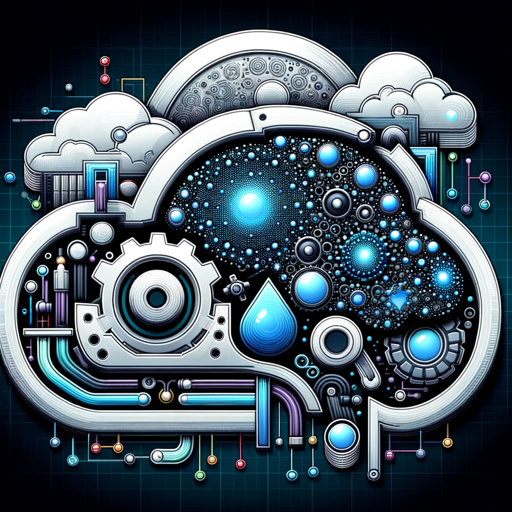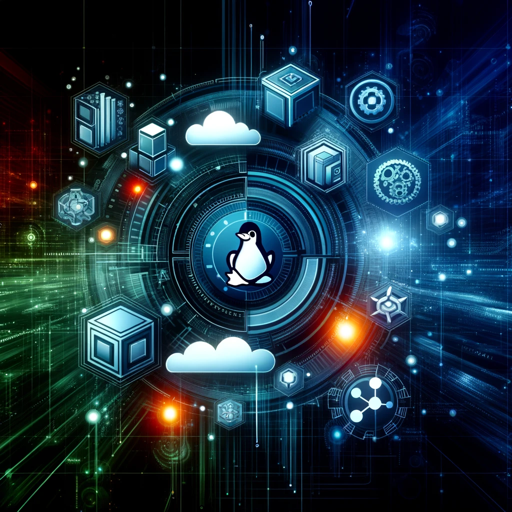Agile & DevOps Guide-Agile and DevOps guidance.
AI-powered guidance for Agile and DevOps excellence.
How do I implement Scrum in a small team?
What are the best DevOps tools for CI/CD?
Can you explain the Agile manifesto?
Tips for improving team communication in Agile?
Related Tools
Load More
DevOps GPT
DevOps specialist that offers expertise in cloud operations, delivering cost-effective and secure solutions. An expert that excels in solving challenges, providing accurate guidance on Bash, AWS, Terraform, Kubernetes (K8S), Open Source, Helm, Linux Shell
Devops Guru
Expert in DevOps scripting and automation, specializing in GCP, Terraform, Ansible, and more.

Agile Mentor
Transcends Scrum, offering holistic Agile coaching, strategic insights, and leadership guidance for a comprehensive mentoring experience.

MLOps & DevOps
An expert MLOps engineer assisting in DevOps and pipeline optimization.

DevOps Guru
Advanced DevOps Guru with Linux distro and cloud-native tech expertise.

DevOps Guru
DevOps Solutions Architect specializing in GitLab, Azure, AWS, CICD, Python, and mobile environments.
20.0 / 5 (200 votes)
Introduction to Agile & DevOps Guide
The Agile & DevOps Guide is designed to offer detailed insights and practical advice for organizations, teams, and individuals looking to implement or improve Agile methodologies and DevOps practices. Its primary function is to bridge the gap between development teams and operations teams, fostering collaboration, enhancing efficiency, and ensuring continuous delivery of high-quality software. By focusing on both Agile and DevOps, the Guide addresses the entire software development lifecycle, from ideation and planning to deployment and monitoring, integrating concepts like CI/CD (Continuous Integration/Continuous Deployment), automation, and Agile ceremonies (like sprints and retrospectives). For example, a software team struggling to deliver features on time might consult the Agile & DevOps Guide to explore the benefits of adopting Scrum or Kanban methodologies. Additionally, the Guide can help operations teams set up automated pipelines, reducing manual interventions and deployment errors. The service provides clear, actionable advice that helps teams move from theoretical understanding to real-world implementation.

Key Functions of the Agile & DevOps Guide
Agile Methodology Guidance
Example
A team new to Agile wants to transition from a traditional Waterfall approach. They consult the Guide to learn about Scrum, creating a product backlog, and establishing sprint cycles.
Scenario
A newly formed startup’s development team lacks a clear structure and is facing delays. Using the Guide, the team adopts Agile, introducing daily stand-ups, sprint planning, and regular retrospectives. This improves their workflow and helps them deliver incremental updates faster.
DevOps Tooling and Automation
Example
A company wants to improve its CI/CD pipeline and reduce the time between code commits and deployments. The Guide offers advice on integrating Jenkins for automation, Docker for containerization, and Kubernetes for orchestration.
Scenario
An e-commerce company is experiencing bottlenecks in their manual deployment process, leading to increased downtime during releases. By following the Guide’s advice on setting up Jenkins and Docker, they automate their build and deployment process, reducing release time from hours to minutes.
Collaboration Best Practices
Example
A software team is struggling to align development and operations efforts, leading to miscommunication and delays. The Guide provides practical frameworks like cross-functional teams, continuous feedback loops, and frequent communication between dev and ops teams.
Scenario
A large enterprise faces frequent breakdowns between development and operations, causing service outages during deployments. The Guide helps them implement DevOps collaboration tools like Slack integrated with monitoring systems (e.g., Prometheus), allowing real-time issue tracking and faster resolutions.
Target User Groups for Agile & DevOps Guide
Software Development Teams
Teams that are either new to Agile methodologies or are looking to optimize their current practices will benefit greatly from the Guide. It provides step-by-step explanations on how to implement frameworks like Scrum, Kanban, or Lean. It also offers tips on improving collaboration between developers and product managers, ensuring that the backlog is properly groomed, and ensuring work is delivered in a consistent and predictable manner.
DevOps Engineers and IT Operations Teams
For teams focused on deploying, monitoring, and maintaining infrastructure, the Guide provides detailed advice on implementing DevOps principles like CI/CD, infrastructure as code, and cloud-native practices. IT teams looking to automate repetitive tasks, improve uptime, and reduce deployment risks will find the Guide particularly useful. The practical tips on tooling (Jenkins, Docker, Kubernetes) and culture changes (shifting to a 'you build it, you run it' mentality) help these teams achieve better collaboration and efficiency.

How to Use Agile & DevOps Guide
1
Visit aichatonline.org for a free trial without login, no need for ChatGPT Plus.
2
Familiarize yourself with the interface. You can start by exploring the Agile methodologies and DevOps tools section for instant guidance on implementation practices.
3
Use the search function to ask detailed queries or request step-by-step explanations related to Agile principles, Scrum, Kanban, or DevOps tools and automation.
4
Apply the provided insights or instructions directly to your projects, whether for sprint planning, continuous integration, or deployment pipelines.
5
Return regularly for continuous learning and best practices updates in Agile and DevOps, ensuring your team stays aligned with the latest standards.
Try other advanced and practical GPTs
Hypothesis Explorer
AI-powered insights for research hypotheses.

Inspire Light
AI-driven inspiration for every day.

Tax Navigator
AI-Powered Tax Solutions for Everyone

Network Buddy - Meraki
AI-powered Meraki Network Manager

RatoneandoGPT
AI-powered price comparisons made easy.

AiTTRIBUTOR
AI-powered cybersecurity threat attribution tool.
Digital Marketing Guru
AI-powered solutions for digital marketing success.

DiarioBitcoin Editor
AI-powered editor for crypto insights.

(AAP) Kate
AI-powered empathy and support.

TubeMentorAI by Disrupter School
AI-Powered Video Optimization for Creators
Interactive Storyteller
Interactive stories shaped by your choices.

YakuzaGPT
AI-Powered Unfiltered Intelligence

- Project Management
- Team Collaboration
- Remote Work
- DevOps Automation
- Agile Training
Common Questions About Agile & DevOps Guide
How can Agile & DevOps Guide help me in my day-to-day project management?
It provides detailed advice on Agile methodologies like Scrum or Kanban, helping you optimize team collaboration, sprints, and workflows. It also supports DevOps practices such as CI/CD, automating manual tasks and improving software delivery efficiency.
What kind of DevOps tools can this guide help with?
The guide offers insights into popular DevOps tools like Jenkins, Docker, Kubernetes, and Git. It provides recommendations for setup, automation workflows, and how to integrate these tools for smoother operations across development and deployment pipelines.
Is this guide suitable for beginners?
Yes, the guide is designed to cater to both beginners and experienced professionals. It breaks down complex concepts into easy-to-understand explanations, helping new users grasp key principles, while offering in-depth knowledge for those familiar with Agile and DevOps.
How can I use this guide for Agile coaching?
You can use it to build Agile coaching strategies by accessing tips on team dynamics, agile ceremonies, backlog grooming, and sprint reviews. It also helps address common challenges teams face when adopting Agile practices.
Does this guide support remote teams?
Absolutely. It includes best practices for Agile remote collaboration, tool recommendations for distributed teams, and strategies for maintaining high productivity in DevOps processes even when team members work remotely.